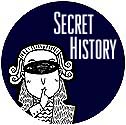
Comment
on this story
|
 |

Market Square 88 years ago, as we'd never seen it before
by Jack Neely
It had been a dry summer in Knoxville, but at least it was cooling off. With highs of only 78, people were thinking about fall. Armstrong's men's clothing store on Market Square—"at the sign of the strong arm"—was advertising fall suits, "the nobbiest we've ever shown."
More than anything in Knoxville, we were looking forward to the Appalachian Exposition, the second one ever, next week out at Chilhowee Park. It promised to be a hummer, as they said in 1911. The month-long exposition had some serious cultural and economic purposes, but what they advertised were attractions like Miss Lotta Mayer, the World's Famous Diving Girl and Strobel's Dirigible Balloon. Oscar Babcock would be there, doing daring bicycle stunts like Looping the Loop and Flying the Flume. And there'd be a pyrotechnic display of the Eruption of Vesuvius. There'd probably be some Appalachian stuff, too, but they didn't make that big a deal of it.
Workmen were dressing up Gay Street for the show, building arches over the street, decorated with light bulbs. Workmen likely looked down curiously that day at the commotion on the street. About 50 men and boys, chasing after a policeman hanging onto two young men of about 20, walking south.
The day before, witnesses said, the two—they called 20-year-olds "boys" in 1911—had stolen two bicycles from the Gay Street sidewalks. Knoxville's youth, especially the news carriers and messenger boys, were outraged, and demanded prompt action. Deputy Daniel Wood tailed the suspects all the way to Lenoir City. He followed them from there to Kingston. He shadowed them from Kingston to Harriman. There he struck, and collared the two thieves. He telephoned back that he'd found his perpetrators. Word spread, and by the time they arrived at the station, an angry mob was there to welcome them home:
"Cries of derision followed the youngsters along Gay Street as they trudged to jail."
Beyond that, it was a quiet Thursday. Senator Robert "Our Bob" Taylor was in town, modestly quashing rumors that he might run for president in 1912. He did sharply criticize President Taft, but suggested someone else, like Mr. Wilson, "the scholar of Princeton," might make a better Democratic candidate than he would.
In 1911, the fact that Market Square was "the best-known spot in Knoxville" was an understatement. At Market Square, they said, you could find "anything that man could desire to eat, drink, and wear." It's a grandiose claim that's hard to disprove. Here there were three shoe stores, three clothing stores, four groceries, plus a meat market and two produce stores and two other stores that specialized in tea and coffee. On Market Square there were five soda fountains, not counting Kerns' extravagant ice-cream saloon, and a couple of Greek-owned restaurants. There was a drugstore, a barber, three hardware stores, a seed store, a tinware shop, a marble firm, a furniture store, and seven boarding houses.
In addition to all that, there was the Market House, with its 57 competing market stalls, each with its own specialty. And outside, dozens of farmers who didn't have stalls showed up every day on Market Square and sold their produce from their carts.
At 6:00, something unusual happened. The police cleared out Market Square early, sent the horse-drawn wagons down the road, and hosed down the streets. Then, at 7:30, Mr. Crouch's brass band began playing favorites. A large crowd gathered. Just after dark, there was a clatter on Union Avenue. A phalanx of policemen cleared the way for what proved to be a horseless carriage loaded with four men in derby hats. Among them was Sam Heiskell, the progressive Democrat who for most of the last 15 years had been mayor of Knoxville.
Heiskell stood in front of the Market House and made a speech. He invited his audience to "go back beyond the memory of any citizen in the sound of my voice to the days 'way back in 1852..." He followed that with a short history of Market Square, interspersed with his own memories. He recalled that he saw his first bicycles on display at the northeast corner of Market Square. It was not long after the Civil War, back when they were called velocipedes.
Snapping out of his reverie, he spoke of modern Market Square. "Architecturally, the gem of Market Square is the splendid Arnstein Building," he said. Completed five years before, the seven-story department store was Knoxville's first steel-frame building, and one of our three or four "skyscrapers." He added the Arnstein was "worthy of any city and showed great courage and faith in the future of Knoxville on the part of its owner."
Max Arnstein might have called it chutzpah. The German immigrant was one of Knoxville's most prosperous merchants, and president of the Market Square Business Men's Club, which sponsored this occasion.
Mayor Heiskell pushed a big button attached to a wire that went up to a pole, and 82 bright lights came on, from Union clear over to Wall. "When the Square was flooded with a steady, scintillating glow of light," the Journal reported, "a mighty cheer went up."
Afterwards, the audience strolled the Square, marveling at the "unbroken line of frosted globes shedding their mellow light into the farthest corners."
It wasn't like the first time we'd seen an electric light. That had been over a quarter century ago. This may have been the first time we'd seen 82 of them, all in one place. They called it "Knoxville's First Great White Way," and promised it was just a harbinger of things to come. Gay Street, they said, would be next.
The Journal cartoon the next day showed a full moon with tear-filled eyes and a light bulb-bedazzled Knoxvillian saying, "We don't need you anymore."

|